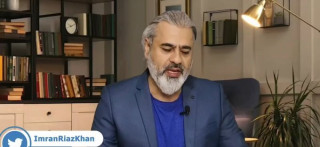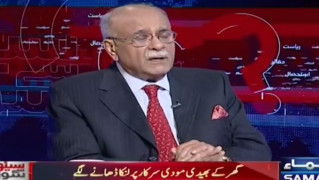T
terex
Guest
http://www.weeklypulse.org/details.aspx?contentID=648&storylist=16
By Yasir Ameen
May 20, 2011
Pakistan has failed to maintain its status of a county with highest tele-density among SAARC nations as India has superseded a top position in the region with overwhelming adoption of technology and telephony services by it masses.
India attained a crown status in the region with its faster growth in number of telephony services subscriptions but also in technology and investment inflow.
Though the country has been witnessing constant growth in number of subscribers particularly in cellular sector, it could not retain its top position in South Asia as a country with the highest tele-density.
Pakistan total tele-density has been reached 66.8 percent by February 2011 with overall 110.3 million users including mobile phone, landline, and wireless whereas Indian tele-density reached 68.4 percent with number total users stood at 826.25 million in February 2011.
Pakistan cellular phone subscription witnessed constant growth in the country amid stiff price war and services by operators, crossing 105 million mark with the tele-density reached 63.2 percent by February 2011.
Pakistan Telecommunication Authority (PTA) latest update statistics showed the subscription of mobile operators in the current fiscal year registered tremendous growth with the increase of 5.96 million on the networks of different operators from July to February.
The total number of cellular phone SIMs has increased to 105.151 million on the networks of five operators by February 2011.
The landline connections have been continued to show decline in Pakistan and stood at 3.4 million by six operators in different regions of the country. The wireless sector also showed discouraging trend with flat growth of subscribers stand at 2.78 million amid immense competition and falling rates.
Pakistan had the highest tele-density of 26.26 in region with 40.72 overall users of different telephony services in 2005. In India, the total subscriber base, landline and mobile put together, stands at 112.7million with tele-density of 10.2 percent as on September 2005.
In terms of population and number of users Pakistan has been retained the highest of country in the highest tele-density till 2011. The tele-density is calculated as number of telephone connections per 100 people. The tele-density of Pakistan is evaluated with 160 million mark whereas India is with 1.25 billion.
Now, the number of telephone subscribers in India increased to 846.32 million at the end of March 2011 as compared with 826.25 million in February 2011, thereby registering a growth rate of 2.43 per cent. The overall tele-density in India reached 70.89 by March.
Wireless subscriber base increased from 791.38 million in February 2011 to 811.59 million registering a growth of 2.55 per cent. Wireless tele-density stands at 67.98.
Landline subscriber base declined from 34.87 million in February 2011 to 34.73 million at the end of March 2011. BSNL/MTNL, two PSU operators, hold 82.61 per cent of the wire line market share.
India is ahead of Pakistan for launching an advanced cellular phone services, that is, 3G with nearly one million of customers in nine cities having high per capita income. On the other hand, Pakistan has yet to be introduced this technology in the country because of telecom operators unwillingness and reluctance on the grounds of low purchasing power of users and lack of earning opportunities against heavy investment.
Pakistan is leading in the cellular users who migrated through a service called Mobile Number Portability (MNP) launched in 2004. India introduced MNP services in January 2011 with 6.4 million network migrated users so far.
There are few features of the two countries and telecom sectors remain similar.
The tele-density remained high in the heavily populated 20 cities of both countries mainly with high economic activities and income power. The rest of the cities have been witnessed slow penetration despite number of telecommunication operators are more than of country’s demand, analysts said.
The number users having more than one connection have also been increasing in significant numbers because of different packages offered by cellular operators.
The actual figures of phone users are not accurate and less than reported by the authorities because millions are connections are inactive in many parts of the country.
Despite all these, the number of subscription in different telecom services are forecast to be increasing with emerging technology and growth in rural areas of both countries with huge land and populated areas.
In Pakistan, analysts said, the users subscribers base is likely to contract significantly after unverified and unregistered SIMs are blocked in millions. The campaign of PTA initiated on the direction of interior ministry will cut the huge subscription and overall tele-density in the country.
However, the number of users will be added again after cleansing process in the country once after huge SIMs will be blocked by mobile phone users, they said and added there is a need to re-set the population benchmark after fresh consensus which is expected to be crossed 180 million in Pakistan.(yapping)
By Yasir Ameen
May 20, 2011
Pakistan has failed to maintain its status of a county with highest tele-density among SAARC nations as India has superseded a top position in the region with overwhelming adoption of technology and telephony services by it masses.
India attained a crown status in the region with its faster growth in number of telephony services subscriptions but also in technology and investment inflow.
Though the country has been witnessing constant growth in number of subscribers particularly in cellular sector, it could not retain its top position in South Asia as a country with the highest tele-density.
Pakistan total tele-density has been reached 66.8 percent by February 2011 with overall 110.3 million users including mobile phone, landline, and wireless whereas Indian tele-density reached 68.4 percent with number total users stood at 826.25 million in February 2011.
Pakistan cellular phone subscription witnessed constant growth in the country amid stiff price war and services by operators, crossing 105 million mark with the tele-density reached 63.2 percent by February 2011.
Pakistan Telecommunication Authority (PTA) latest update statistics showed the subscription of mobile operators in the current fiscal year registered tremendous growth with the increase of 5.96 million on the networks of different operators from July to February.
The total number of cellular phone SIMs has increased to 105.151 million on the networks of five operators by February 2011.
The landline connections have been continued to show decline in Pakistan and stood at 3.4 million by six operators in different regions of the country. The wireless sector also showed discouraging trend with flat growth of subscribers stand at 2.78 million amid immense competition and falling rates.
Pakistan had the highest tele-density of 26.26 in region with 40.72 overall users of different telephony services in 2005. In India, the total subscriber base, landline and mobile put together, stands at 112.7million with tele-density of 10.2 percent as on September 2005.
In terms of population and number of users Pakistan has been retained the highest of country in the highest tele-density till 2011. The tele-density is calculated as number of telephone connections per 100 people. The tele-density of Pakistan is evaluated with 160 million mark whereas India is with 1.25 billion.
Now, the number of telephone subscribers in India increased to 846.32 million at the end of March 2011 as compared with 826.25 million in February 2011, thereby registering a growth rate of 2.43 per cent. The overall tele-density in India reached 70.89 by March.
Wireless subscriber base increased from 791.38 million in February 2011 to 811.59 million registering a growth of 2.55 per cent. Wireless tele-density stands at 67.98.
Landline subscriber base declined from 34.87 million in February 2011 to 34.73 million at the end of March 2011. BSNL/MTNL, two PSU operators, hold 82.61 per cent of the wire line market share.
India is ahead of Pakistan for launching an advanced cellular phone services, that is, 3G with nearly one million of customers in nine cities having high per capita income. On the other hand, Pakistan has yet to be introduced this technology in the country because of telecom operators unwillingness and reluctance on the grounds of low purchasing power of users and lack of earning opportunities against heavy investment.
Pakistan is leading in the cellular users who migrated through a service called Mobile Number Portability (MNP) launched in 2004. India introduced MNP services in January 2011 with 6.4 million network migrated users so far.
There are few features of the two countries and telecom sectors remain similar.
The tele-density remained high in the heavily populated 20 cities of both countries mainly with high economic activities and income power. The rest of the cities have been witnessed slow penetration despite number of telecommunication operators are more than of country’s demand, analysts said.
The number users having more than one connection have also been increasing in significant numbers because of different packages offered by cellular operators.
The actual figures of phone users are not accurate and less than reported by the authorities because millions are connections are inactive in many parts of the country.
Despite all these, the number of subscription in different telecom services are forecast to be increasing with emerging technology and growth in rural areas of both countries with huge land and populated areas.
In Pakistan, analysts said, the users subscribers base is likely to contract significantly after unverified and unregistered SIMs are blocked in millions. The campaign of PTA initiated on the direction of interior ministry will cut the huge subscription and overall tele-density in the country.
However, the number of users will be added again after cleansing process in the country once after huge SIMs will be blocked by mobile phone users, they said and added there is a need to re-set the population benchmark after fresh consensus which is expected to be crossed 180 million in Pakistan.(yapping)































